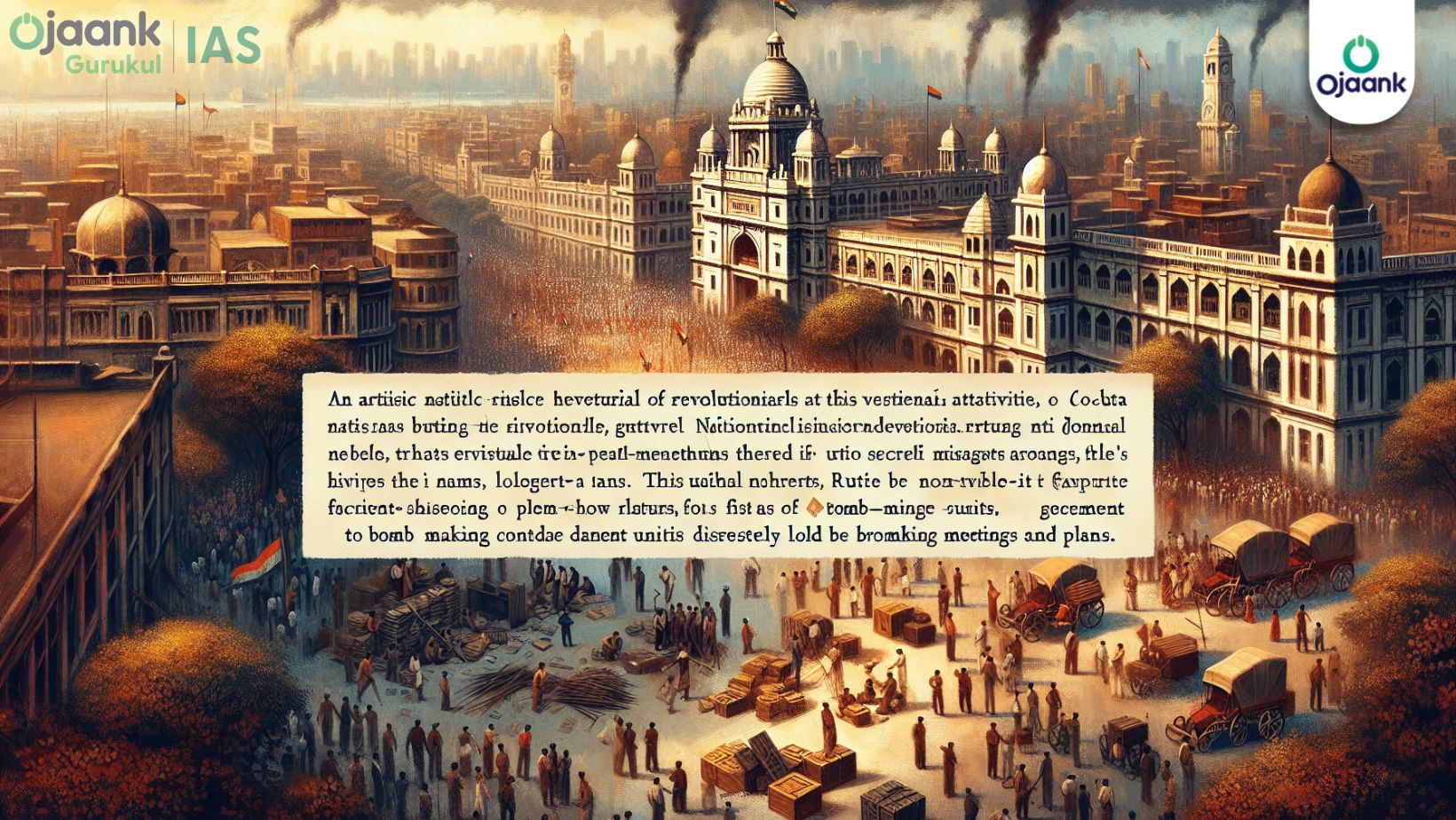How Calcutta Became a Revolutionary Hotspot During the Freedom Movement

1. What was the significance of Calcutta in the early 20th century Indian freedom movement ?
Calcutta, now Kolkata, was the epicentre of nationalist politics in the early 20th century. It was a hub for revolutionary activities and played a central role in the anti-colonial struggle, marked by events like the assassination attempt on Magistrate Douglas Kingsford and the subsequent discovery of a bomb-making unit.
2. What triggered the heightened revolutionary activities in Calcutta around 1908?
The assassination attempt by Prafulla Chaki and Khudiram Bose on April 30, 1908, which accidentally resulted in the deaths of two European women, ignited a fierce manhunt for revolutionaries. This led to the discovery of Barindrakumar Ghosh’s bomb-making unit and intensified revolutionary activities in the city.
3. Who was Barindra kumar Ghosh and what role did he play in the revolutionary activities in Calcutta?
Barindrakumar Ghosh was a key figure in the revolutionary movement and the younger brother of Aurobindo Ghosh. He operated a secret bomb-making unit in Maniktala, Calcutta, under the guise of a fitness club, and was instrumental in recruiting revolutionaries and stockpiling arms.
4. How did the Swadeshi movement influence the rise of revolutionary tactics in Calcutta?
The Swadeshi movement fostered a sense of nationalist fervour and led to increased acceptance of revolutionary tactics. It shifted the focus from non-violent methods to more radical approaches aimed at creating anarchy from within to challenge colonial rule.
5. What were some notable locations in Calcutta associated with revolutionary activities?
Key locations included:
- Eden Hindu Hostel: A hub for student activism and arms storage.
- Acharya Ray’s Laboratory: A covert center for refining bomb-making formulas.
- Saraswati Press: A site for printing revolutionary literature and top-secret documents.
- Jorasanko Thakurbari: The Tagore family mansion that doubled as a secret meeting place for revolutionaries.
- Dr Narayan Rai’s Clinic: A disguised center for crafting explosives.
6. What role did women play in the revolutionary activities in Calcutta?
Women played a significant role, with figures like Kamala Dasgupta actively participating in revolutionary plans and managing secret operations. Women revolutionaries were involved in various activities, from storing bombs to plotting high-profile assassinations.
7. What was the impact of British crackdowns on revolutionary activities in Calcutta?
Increasing police crackdowns and the shift of the Indian capital to Delhi gradually weakened Bengali influence in national politics. Despite the initial fervor and involvement, these measures stifled the revolutionary movement's effectiveness and visibility over time.
8. How are the revolutionary sites in Calcutta remembered today?
Many of the revolutionary sites have faded into history or have been repurposed, but they are still remembered through historical accounts and local lore. Places like the Eden Hindu Hostel, Acharya Ray’s Laboratory, and Jorasanko Thakurbari serve as historical reminders of the intense nationalist struggle that shaped modern India.
By Ojaank Sir